The mysterious death of a spotted deer has put Sanjay Gandhi National Park’s water woes in the spotlight, with allegations that the animal lost its life to dehydration
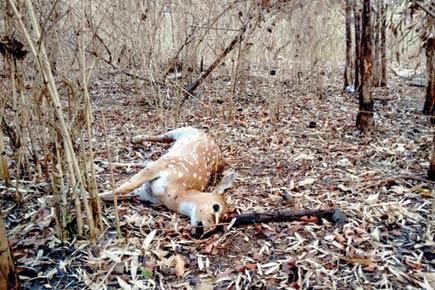
Sanjay Gandhi National Park has left its animal residents high and dry. The mysterious death of a spotted deer has now put the park’s water woes in the spotlight, with allegations that the animal lost its life to dehydration.
ADVERTISEMENT
Also Read: Mumbai: mid-day tests SGNP's nature tour app
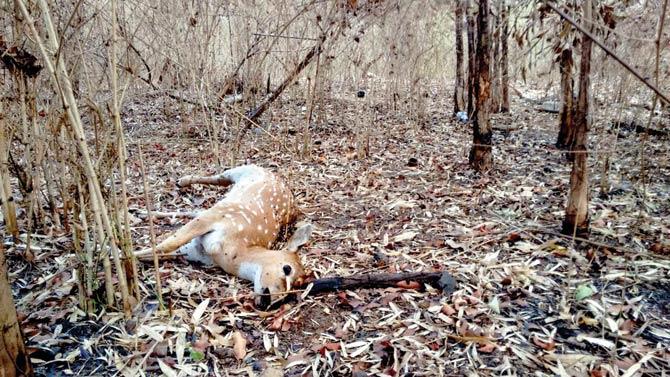
The spotted deer was found dead in the Krishnagiri range, which bears a parched look like much of the national park
Summer is yet to reach its peak, and the park already bears a parched look with natural water sources quickly drying out. Hundreds of animals at SGNP could end up like this spotted deer, since the park officials haven’t even bothered to fill the artificial watering holes for them. Instead, they are showering hundreds of litres of water on the garden.
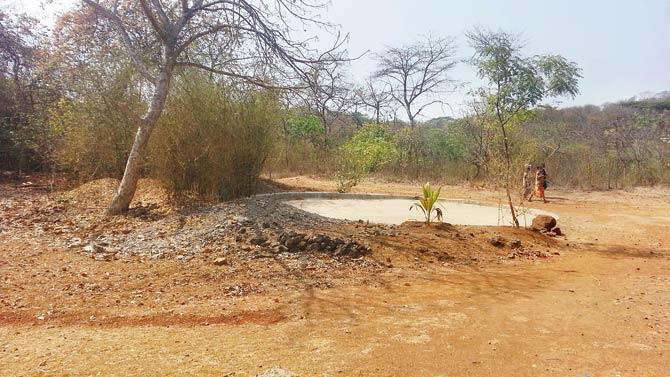
The 10x10-foot watering hole is about 1.5 foot deep but won’t provide any relief to animals as it is bone-dry
Locals have sent mid-day pictures of the deer, as well as photographs of bone-dry watering holes in the park. They are of the opinion that the animal might have died due to severe dehydration. However, the SGNP veterinarian claimed the deer died due to septicaemia.
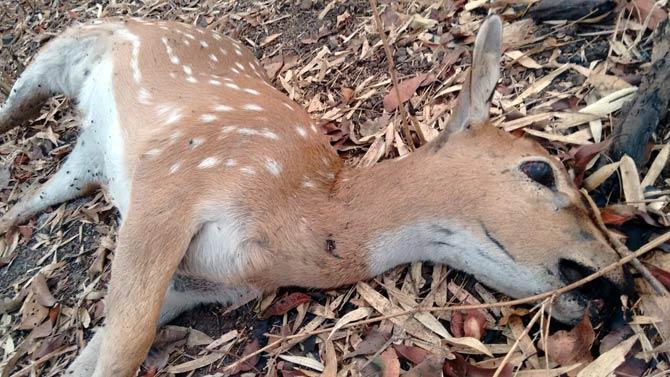
A local sent mid-day this picture of the spotted deer that died at the park yesterday. While the local alleged the deer died of dehydration, the official claimed it was septicaemia that took the animals’ life
Vet speak
Veterinarian Dr Shailesh Pethe said, “A spotted deer was found at SGNP on Thursday afternoon. It was in an unconscious state. We immediately brought the deer to our hospital where it died in the afternoon around 2-3 pm while undergoing treatment. It is difficult to say what is the exact cause of death until the autopsy reports are out. I don’t think that it died because of heat because we have adequate water in the park for the wild animals, but we suspect that it might have died because of septicaemia.”
Read Story: Sanjay Gandhi National Park lets tigers out of cages
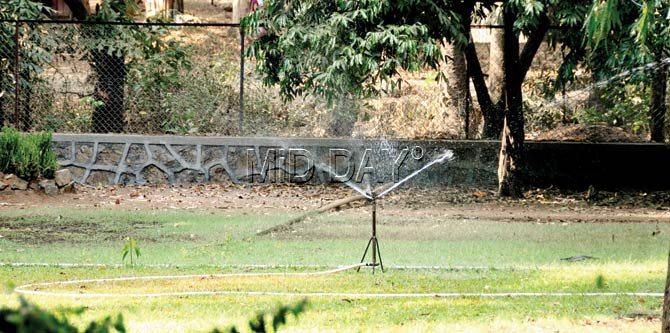
Instead of filling the watering holes for the animals at the park, the officials are using hundreds of litres of water to keep the plants and lawn alive at SGNP. Pic/Satej Shinde
But the pictures sent to this paper tell a very different story. The deer seems dead and the body shows no major injuries – apart from a puncture mark on the neck – nor is there any sign that it was even partially eaten. The deer’s body was found in the Krishnagiri range, which is among the greener areas of the park, since it close to the Dahisar river. However, the picture shows how dry and stark the area has become.
In fact, the Krishnagiri range is not the regular haunt for deer since it is within a kilometre of the park entrance. Instead, the deer prefer to stay deeper inside the core area, towards the Kanheri caves. It is because the interior ranges are dry that they have been pushed out to the edges, closer to the river. But even that didn’t save this deer.
Another picture sent to mid-day of an empty watering hole is also situated in the Krishnagiri range. The 10x10-foot watering hole is about 1.5 foot deep, but it will not provide any relief to the animals, since it is completely dry.
“I personally believe that the authorities are least interested in doing their work. The best example is the empty artificial water holes, which don’t have even a drop of water. The artificial water holes are meant to be filled particularly during summer, when the natural water sources dry up. We are in the third week of April; I don’t understand what the officials are waiting for,” a wildlife enthusiast told this reporter.
He added, “A friend of mine told me that he saw another water hole in the Shilonda trail that was completely dry, and a third empty one at a different location. According to FD officials, there are seven artificial water holes in the Krishnagiri Upvan range and 11 water holes in the Tulsi range. Two years ago, the park authorities also constructed some more water holes. The department is supposed to fill these waterholes with fresh drinking water once every fortnight. However, sources from the FD told this paper that the watering holes are mostly filled just before the annual water hole census in May. There are also a few natural sources that have not dried out, but the animals avoid drinking from there since the water is polluted by tribals who wash their clothes there.
 Subscribe today by clicking the link and stay updated with the latest news!" Click here!
Subscribe today by clicking the link and stay updated with the latest news!" Click here!






